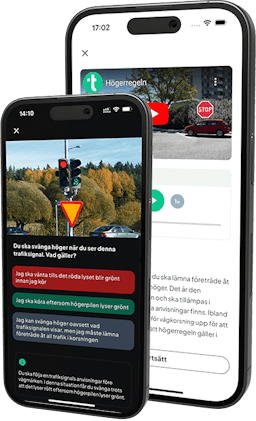
Summer Tyres
Summer tyres are designed to have best traction on concrete and asphalt surfaces. The rubber that they are made from becomes harder in colder temperatures, which means that they lose traction in winter road conditions. The tread pattern on summer tyres is designed to dispel water and prevent aquaplaning. The tread depth on newly manufactured summer tyres is 8-9 mm. As the tyres become worn, the tread depth is reduced, which leads to impaired driving characteristics and greater risk of aquaplaning. The minimum permitted tread depth on summer tyres is 1.6 mm.
Winter Tyres
There are two types of winter tyres: studded tyres and friction tyres. Winter tyres must be studded or marked with the snowy mountaintop/snowflake symbol.
Winter Tyres Act
The law on winter tyres stipulates that winter tyres must be used during winter conditions between 1 December and 31 March. The tyres must have a tread depth of at least 3 mm.
Friction tyres
Friction tyres are winter tyres that do not have studs. Friction tyres have good traction on snow, but are not quite as good on ice. The advantage of friction tyres is that they do not wear the roads down as much as studded tyres do.
Studded tyres
The advantage of studded tyres is that they have better traction on ice and hard-packed snow. The downside is that they have worse traction and a longer braking distance on dry asphalt roads.
Regulations for studded tyres
- There is a ban on studded tyres at certain times and within certain areas.

- Studded tyres are prohibited between 16 April and 30 September. Exception: Studded tyres can be used during this period if there are winter road conditions, or if such conditions are expected.
- If you are using studded tyres, then you must have studded tyres on all four wheels. It is prohibited to use studded tyres on only some of the wheels.
- If your car has studded tyres and you are using a trailer, then the trailer must have studded tyres as well in winter road conditions.
Spare Wheel (Temporary Spare Wheel)
When you buy a car, it will have a spare wheel. If a tyre is punctured when you are out driving, then you can replace that wheel with the spare wheel. The spare wheel might be the same as the other wheels, or it might be a temporary spare wheel. The temporary spare wheel may only be driven at a certain speed and for a certain distance. This is normally no faster than 80 km/h and for no further than eighty kilometres. You can find more information on this in your instruction manual.
Wear and Tread Depth
Since worn tyres result in impaired driving characteristics and an increased risk of aquaplaning, you will need to check the tread depth regularly. To help you with this, there are tread wear indicators for the tyres which show when the tread depth is getting too low. Tyres naturally become worn when they are used, but there are several things you can do to help them last longer:
- Air pressure: Having the correct air pressure is the most important factor for reducing wear. You can check what air pressure your tyres should have in your car’s instruction manual. Check the air pressure regularly. Some cars have a TPMS (Tyre Pressure Monitoring System) which uses sensors in the wheels to register the air pressure and temperature in the tyres. If the air pressure is too low in one of the tyres, an indicator lamp lights up on the dashboard. From November 2014, it is a legal requirement that all new cars have a TPMS installed.
- Wheel alignment: If the car pulls to one side when you are driving straight ahead, this may be due to incorrect wheel alignment. The edges of the front tyres will wear down much more quickly if the wheel alignment is incorrect. If this happens, you should take the car into a garage to have the problem fixed.

- Balancing: If the wheels are incorrectly balanced, this will often lead to patchy wear on them. Incorrectly balanced front wheels often lead to “steering wheel shake” – i.e. the steering wheel shakes.
- Avoid strong braking and acceleration.
- Take it easy on bends.
Changing Tyres
If you only change the tyres on some of the wheels, it is important that you change both the front-wheel tyres or both of the rear- wheel tyres at the same time. Tyres on the same axle must have the same tread depth. It is important that the rear-wheels have the best traction so as to avoid skidding from the rear. If you have bought two new tyres, they should therefore be mounted on the rear axle.
In order to be completely sure that none of the wheels will come loose after changing tyres, you should always retighten the bolts. You should do this after having driven between fifty and one hundred kilometres with the new tyres.


